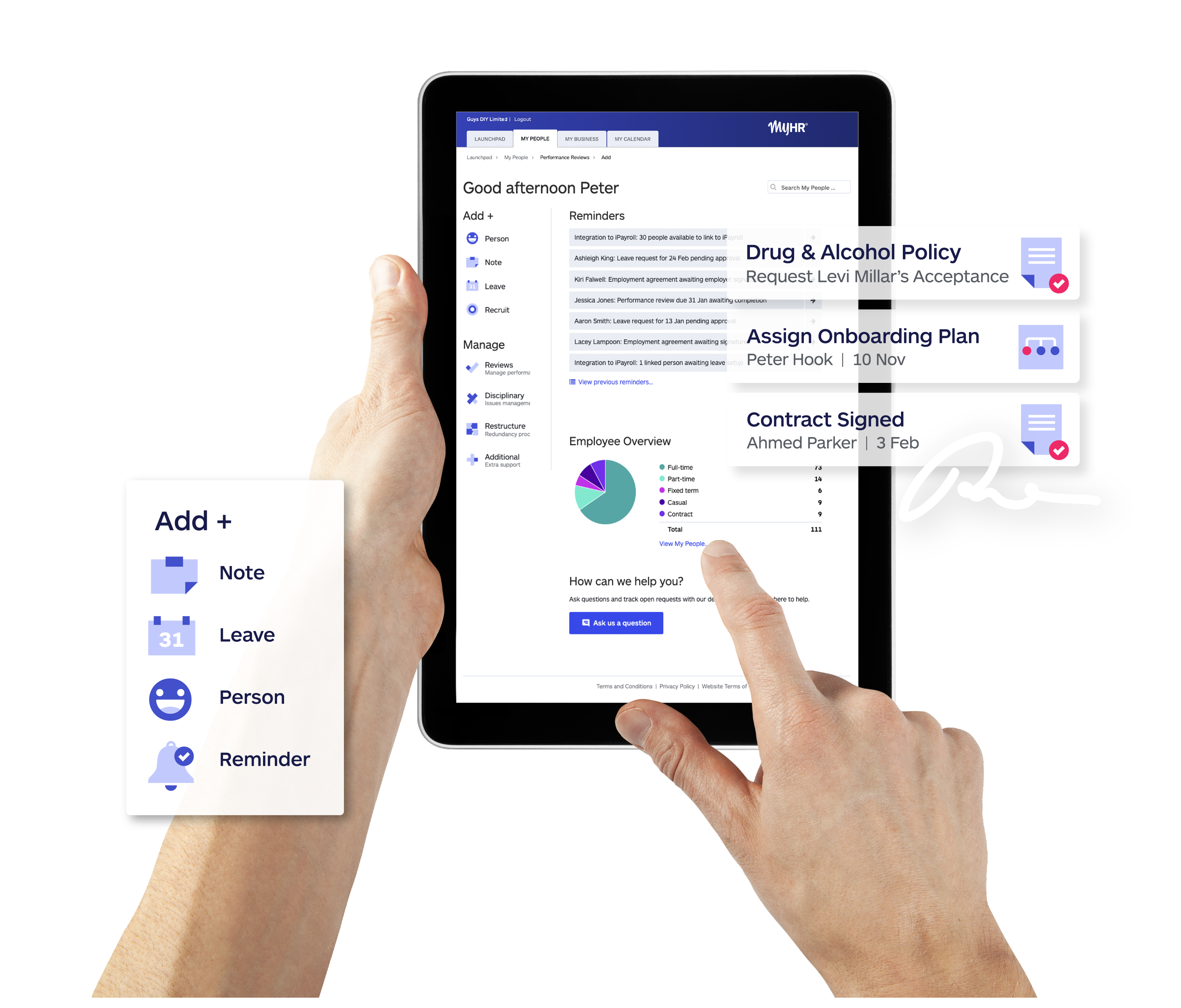
The mental health of employees comes up regularly in the workplace these days, and so does the use of Employee Assistance Programs or EAPs: what they are, the benefits they offer workers and businesses, and how they function in the workplace.
Employers have a legal responsibility to support the mental health of employees, and research has shown that workplaces that promote good mental health are more likely to see higher worker productivity and reduced rates of absenteeism and presenteeism (being at work despite being sick or tired).
MyHR is partnered with leading Employee Assistance Program provider, Clearhead. Clearhead provides easy-to-access mental health support, from wellbeing resources and guided chats to in-person counselling. All MyHR customers are eligible for a Clearhead Lite subscription with the fee waived - find out more about the exclusive offer.
What is an Employee Assistance Program?
An Employee Assistance Program (EAP) is a service designed to help employees deal with and resolve problems that are impacting their wellbeing. They might be issues in the workplace or personal problems.
An EAP is also an advisory service for managers and supervisors who need help staff with their welfare or concerns.
An EAP’s main aim is to provide people with confidential, expert assistance and support in times of stress.
EAP programs are particularly helpful in New Zealand as the wait-lists for mental health support (like councellors) can be very long. EAP programs also take the barrier of cost away, allowing employees to access services that support their mental wellbeing.
Is an EAP service always outsourced?
Typically, for small to medium-sized businesses, an EAP is outsourced to a specialty provider. This ensures the efficacy and confidentiality of the service, which in turn encourages people to use it.
Some large organisations may have in-house EAPs, employing staff to run the program, and others use a hybrid model of employees overseeing the service in conjunction with third-party specialists.
How does an EAP typically work?
EAP is a short-term support service that usually allocates a number of initial sessions for an employee, or their immediate family member, to access talk therapy. The employee contacts the service to request support and the EAP service sets them up with a counsellor or therapist. They attend the therapist’s office location or have their sessions online.
The service should also provide access to helpful tools and wellbeing resources for employees, e.g. self-help information, educational webinars, short courses.
Is EAP just counselling?
A good EAP service will provide a range of resources for employees to access alongside specialists - e.g. counsellors, psychotherapists, and clinical psychologists - who use a variety of psychological assessments and therapeutic approaches to support clients.
Why do businesses (and employees) need an EAP?
We bring our whole selves to work. When your staff start their work day they bring all their concerns and emotional challenges with them. If you want to create an innovative and highly efficient workforce, your people need to be motivated, focused, and healthy.
EAP gives people a confidential way to access support that can help people deal with their concerns and emotional challenges, which could otherwise hamper or debilitate their contributions at work.
Research shows that without wellbeing support, employees suffer higher levels of stress, disengagement, absenteeism, and quitting.
What are the risks of not having an EAP?
Mental health is top of mind for many workers, and they expect workplaces to invest in their wellbeing. It’s no longer a nice-to-have; it’s an expectation, and holding onto your talent requires that you provide it.
An EAP service provides a way for your people to access the support that they need, when they need it. Without it, you risk challenges to employee wellbeing affecting their engagement and productivity, with higher rates of absenteeism and presenteeism (being at work but unwell or distracted), more turnover, and potential grievances and legal challenges.
What are the elements of an effective EAP?
An effective EAP should offer a range of specialists and specialist expertise to support individuals. There should be a variety of therapy modalities and timeframe options. As much as possible, the user of the EAP service should be given options to ensure the support offered fits their needs.
Most importantly an EAP service must be confidential; it is essential that employees have trust in the confidentiality of the EAP support or they will not use the service.
Should the EAP options be tailored to the business?
For some workforces, this is very important. Examples of this would be if your workforce has high exposure to trauma, or perhaps your workforce operates in remote regions of Aotearoa – these workforces will need their EAP provider to understand the unique needs of their people and have a service set up that can effectively deliver for them.
How much does an EAP cost, and what is the ROI on implementing it for my business?
Employee Assistance Programs can vary in cost from $2-8 per employee, depending on the service and cost structure. As far as the return on investment (ROI) for providing wellbeing support to workforces, figures typically range between 5:1 and 12:1 (so for every dollar invested, you get between $5 and $12 in return).
It’s important to consider staff retention and the cost of replacing people. In many industries, it’s estimated that it takes 6 months for a new staff member to be fully able to achieve their entry-level position deliverables. If you add recruitment time to that, you’re looking at about 9 months where a particular role may not be well delivered. On top of that is the stress on the remaining staff (and management), who need to cover additional tasks.
EAPs positively support business costs, as it is a much more affordable way to keep your staff managing both their personal and work challenges. They will continue to deliver their role requirements and be in the headspace to advance, streamline, and innovate workplace activities.
How to implement an Employee Assistance Program
There are a lot of factors to consider when investigating and implementing an EAP. You need to ensure that the provider can deliver the support services and expertise your employees need.
You should also consider how you will encourage employees to use the service, e.g. can they take time from work to go to appointments? Where will the information on the service be available? Which teams need to be able to explain and promote the services (HR, People Leaders etc)?
There can be a lot of stigma around wellbeing and mental health issues, and an EAP won’t be as effective if employees don't know about it or aren't encouraged to access it.



